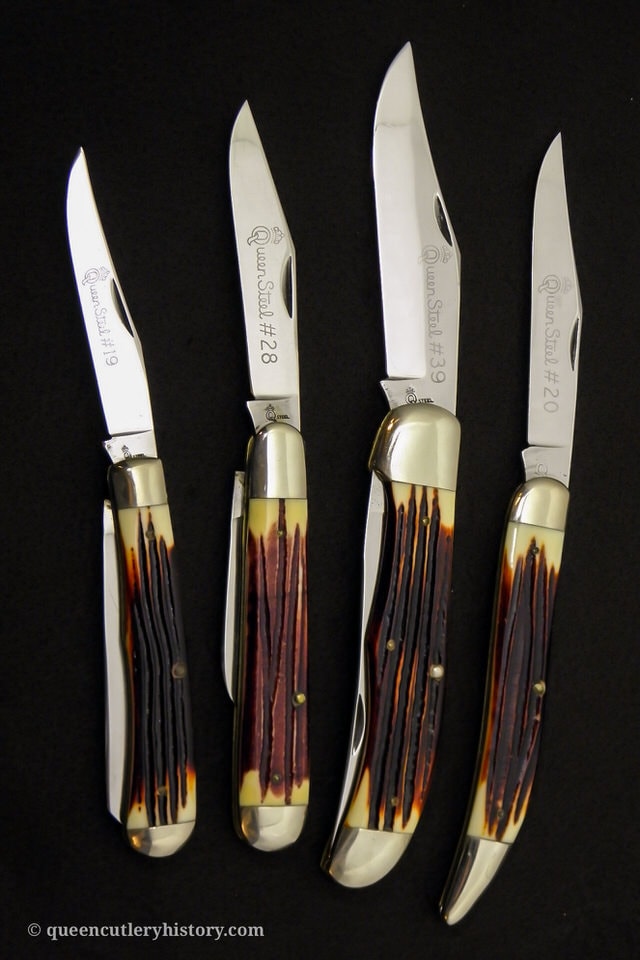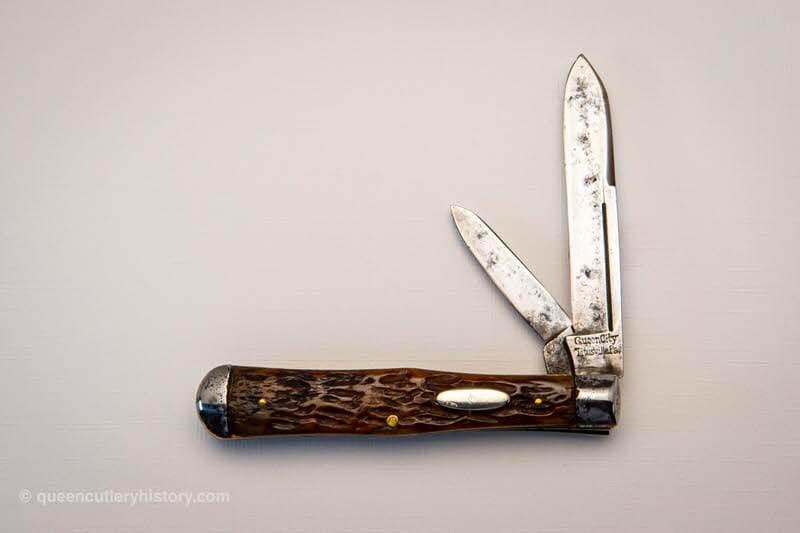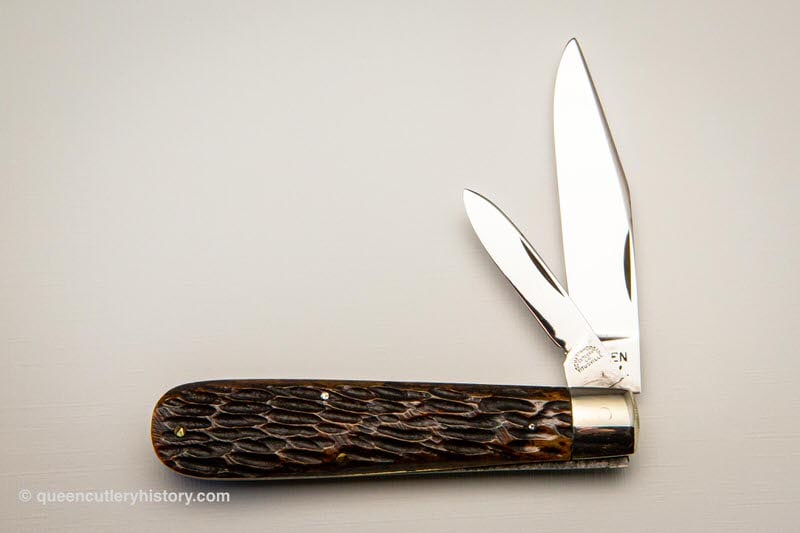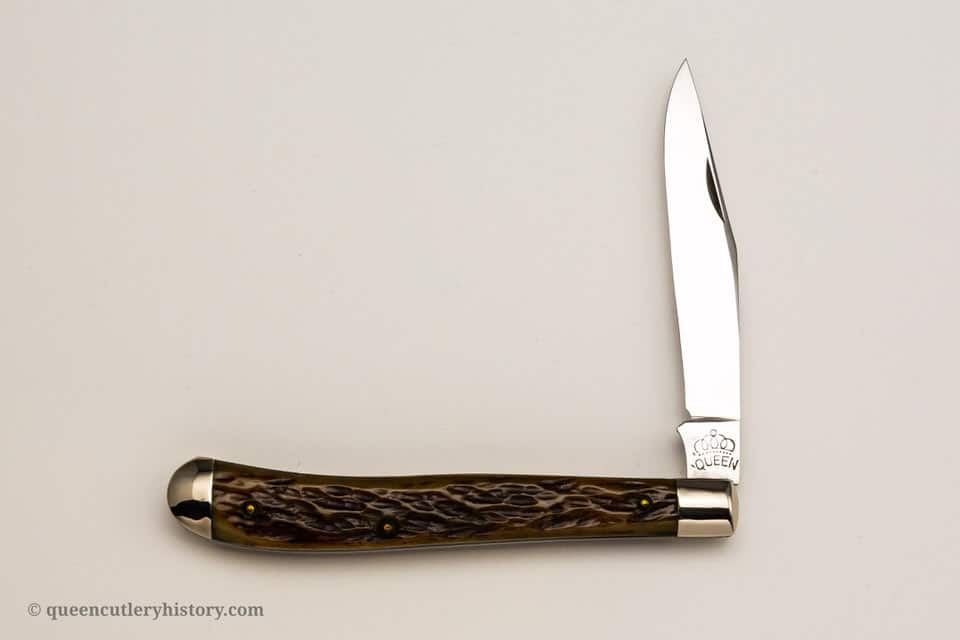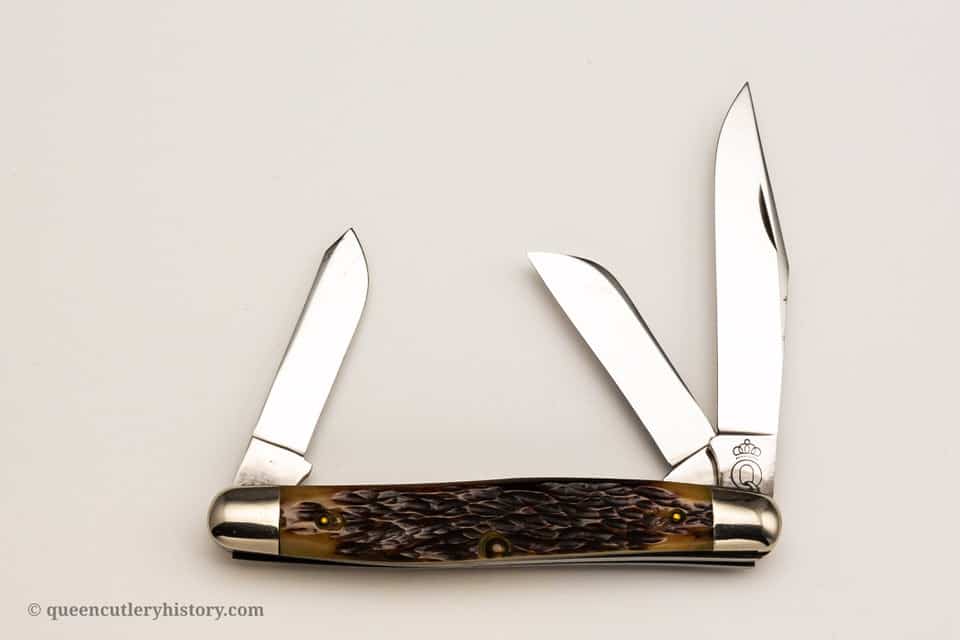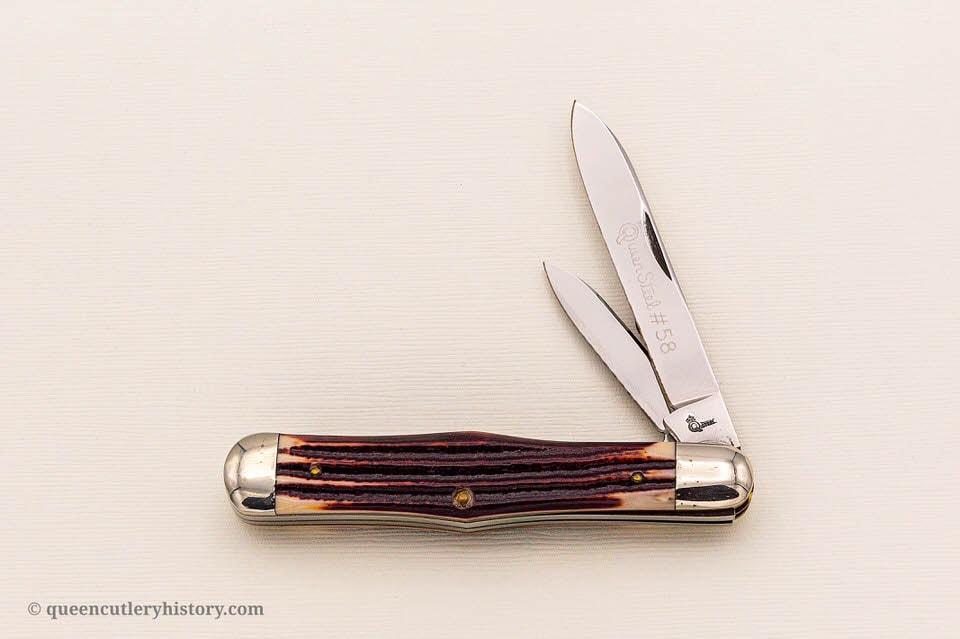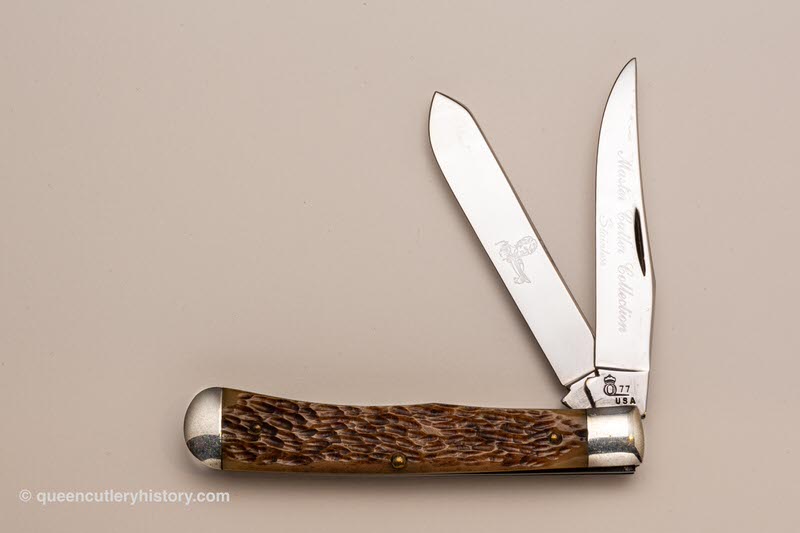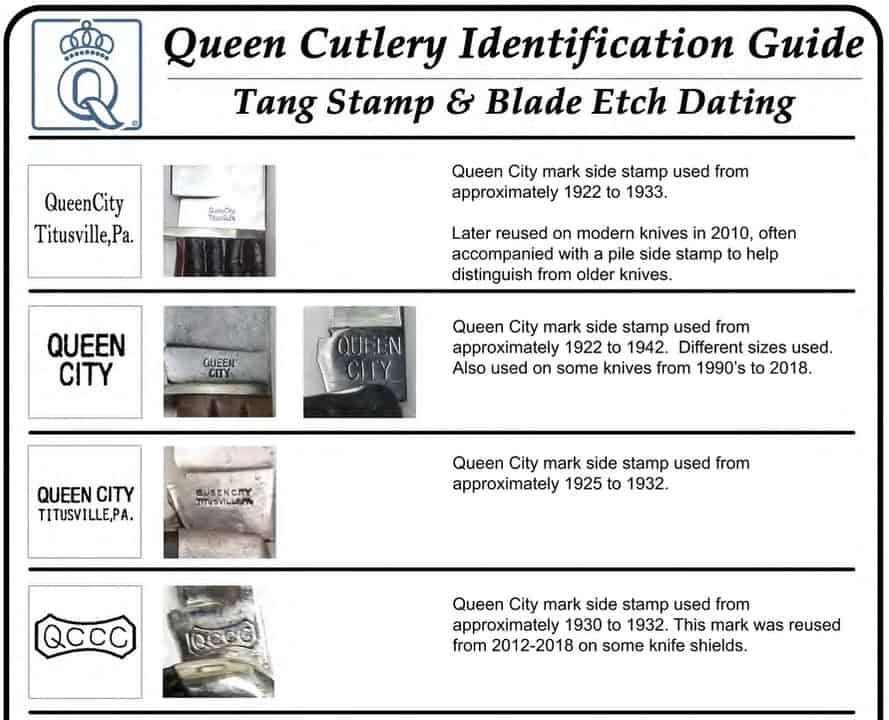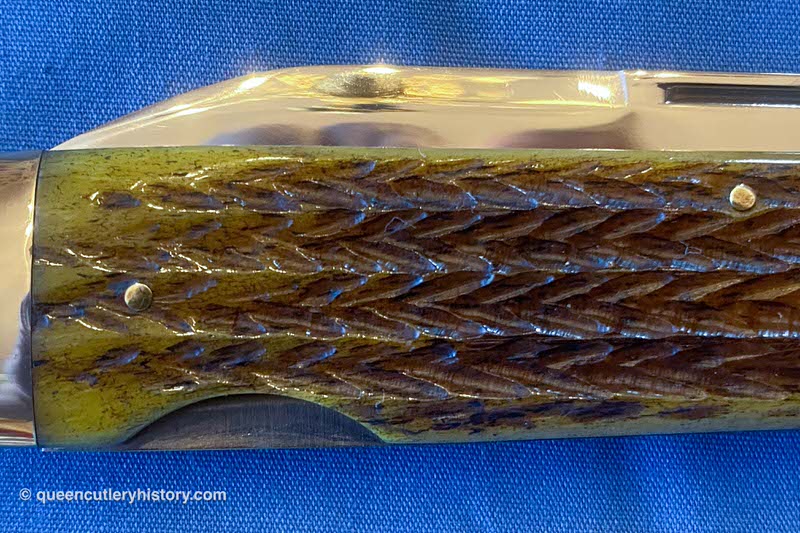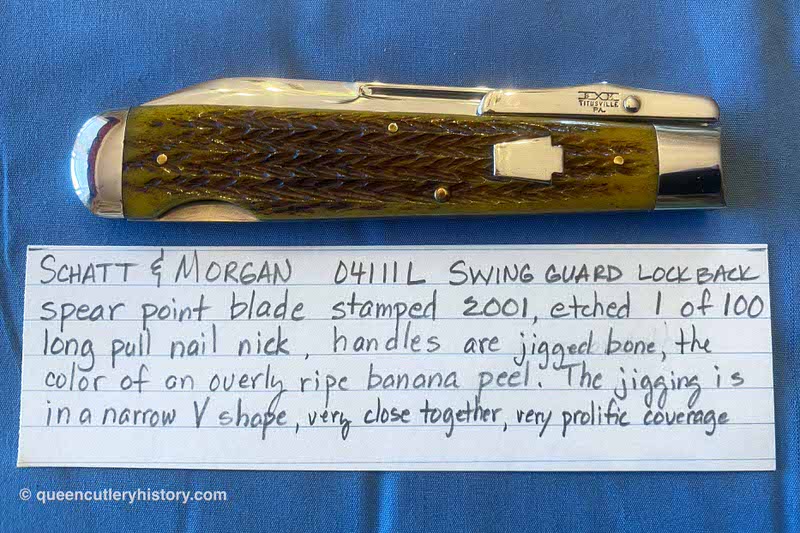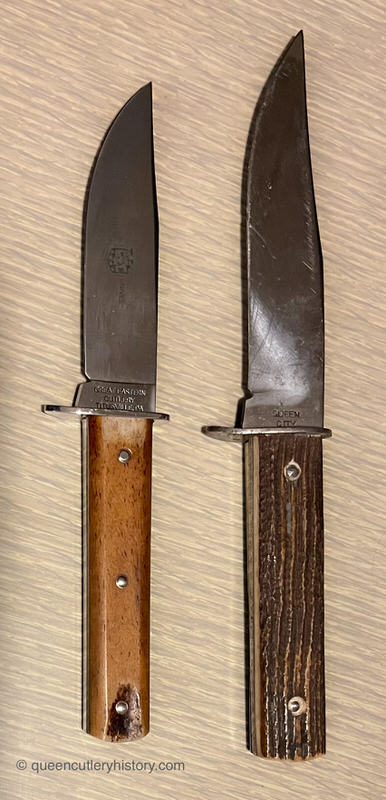
Queen Cutlery History
Complete Guide to Queen and Schatt & Morgan Knives and History
Queen Cutlery History is a comprehensive, informative resource for anyone interested in Queen City Cutlery Company and its successor, Queen Cutlery Company. In addition the website features information on the related companies, Schatt & Morgan and the Dollar Knife Company. For the first time, knife collectors and historians have access to a knowledge bank of knife photos and descriptions, historical documents, catalogs and articles related to these legendary cornerstones of the American cutlery industry. Our only focus is on knives made in the USA.
In 2018, having produced high quality cutlery using traditional methods for 96 years, Queen Cutlery closed its doors for good. The curators of this website, David Clark, Linda and Fred Fisher and Bob Welch, had previously served as the Queen Cutlery Historical Committee and are now joined by Carl Bradshaw. We are supported in this effort by knowledgeable Queen and Schatt & Morgan collectors from across the USA. The Daniels Family, last owners of the company have graciously donated all related historical documents from the old Queen website. We are grateful to Jan Carter, of iknifecollector.com for contributing the web domain.
⇒ See just below for a NEW Historical Knife Spotlight article on Queen knives with Rogers bone handles. Previous Spotlight articles can be found in the Spotlight Archive. The entire collection of 2020’s Historical Knife Spotlights are now available in articles for you to check out and download.
⇒ All new Collector Questions & Comments appear here on the home page.
⇒ The Tang Stamp Guide has been updated yet again, to version 9 (October, 2023) – and now contains details on 101 stamps and markings! The guide also includes a supplement with the stamps used on hatchets, razors and scissors. Additionally, the earlier supplement on Dollar Knives, Robeson and Tuna Valley knives is also included. We welcome your questions, comments and suggestions. Contact us here.
Historical Knife Spotlight
We focus the Spotlight on Queen’s use of Rogers Bone knife handles, also referred to as scales. Any collector of Queen knives knows that Winterbottom Bone has long been their so-called signature handle material. In our Historical Knife Spotlight of May, 2021, we pointed out that Queen placed their first Winterbottom Bone order in 1930. Through the 1920’s and up to the very early 1960’s, Queen also purchased bone handles from the Rogers Manufacturing Co. of Rockfall, CT.
Founded in 1891, Rogers started making knife handles sometime around 1900. At first the bone was sourced domestically but within a couple of decades it came predominantly from Argentina. Rogers Bone has its own distinctive appearance. On Queen City or Queen Cutlery knives it was almost always dyed brown. A custom jigging machine, developed by Rogers, created a seemingly random pattern of unique short jigs or cuts in the bone. This machine, or a previous iteration of it, was in service at least by the time of World War I and was retired in 1962.
One of the earliest examples of Rogers Bone handles on a Queen knife can be seen in this photo of a 3” swell center Queen City knife dating from 1922 or not long thereafter. Note the random angles of the jigged cuts.
Another early knife, this 3 3/4” bareheaded jack, exhibits a more uniform orientation to the jigging pattern. This knife was likely made around 1933, not long after Queen
City acquired the assets of the bankrupt Schatt & Morgan cutlery in a Sheriff’s auction. Note the S&M tang stamp on the pen blade. It’s possible the Rogers bone handles also came from the Schatt & Morgan inventory.
These photos of the # 11 slim trapper with Crown & Dots tang stamp and the # 9 Big Q stockman both depict examples of post
World War II Queen knives equipped with Rogers Bone. Note how the brown dye penetrates deeply into the jigs, rendering them darker than the smooth bone at either end.
We mentioned that Rogers had stopped using their special jigging machine in 1962. The reason for this was economic. By the late 1950’s several factors converged to drive a transition from bone to plastic handles on some pocketknives. Rogers response to this was to pioneer the use of molded Delrin plastic handles. Queen Cutlery was an early innovator with this material and their initial offerings featured
what we now know as Burnt Orange imitation winterbottom bone. This photo shows a Burnt Orange # 58 swell center. For a deeper look at the subject, read this article.
Still, Queen did retain a stock of genuine bone handles from Rogers. These handles were used on a number of knives through the 1970’s, 1980’s and even later. One prominent example was the Master Cutler Collection of knives from the late 1970’s.
Created by then Master Cutler and contributor to this website, Fred Sampson, all featured Rogers Bone handles. The trapper in this last photo is an example.
A new Historical Knife Spotlight is published each month. You can see past editions in the Historical Documents section of this website.
Queen Cutlery Identification Guide
Updated to version 9 (October, 2023)!
Tang Stamps – Blade Markings – Production Dates
The most comprehensive and extensively researched guide to Queen and Schatt & Morgan tang stamps and blade markings ever published has just gotten better! Version 9 (October, 2023) of the guide is now a 19 page document which displays over 100 distinct tang and blade markings used by the cutleries over a span of 126 years. Two supplements have been integrated into the Guide. One covers hatchets, razors and scissors. The other details additional brands made by Queen, Dollar Knives, Robeson and Tuna Valley.
This Guide was created by our editors and a group of collectors following the 2018 closure of Queen Cutlery. Markings on knives in their various collections, both tang stamps and blade etches, were photographed, in color and (with few exceptions) are included here.
In addition to the photos, an illustration of the stamp or etch marking is included . This is followed by a description and an accurately estimated time span during which that marking was used.
To view and download, just click the adjacent image.
Collectors Questions & Comments
Bruce B. Contacted us with a blade steel question: When did queen cutlery start using D-2 steel? And does the whittler #48 contain D-2?
QCH answered: Queen started using D2 steel in 2002. The #48CSB (carved stag bone) knives produced after that date had D2 blades.
Brian N. Asked about the bone jigging on a modern Schatt & Morgan lockback: I have a S&M swing guard lock back, 04111L, with handles that I do not know the proper term or name for. The spear point blade is stamped 2001 and etched Schatt and Morgan 1of 100. The handles are bone, the color of a overly ripe banana peel and the jigging is fine textured, almost in a narrow V shape. Can you please tell me the proper name for this handle and this type jigging? Thank you for your response.
After our team discussed this herringbone jig pattern, QCH replied: Queen produced over 100 variations of the swing guard folder over a 25 year period, beginning in 1992, including the 04111L lockback. That pattern number is specific to the Schatt & Morgan line. About 80% of these knives were either special projects or special orders, meaning just about 20% appeared in a catalog or flyer.
After our team discussed this herringbone jig pattern, QCH replied: Queen produced over 100 variations of the swing guard folder over a 25 year period, beginning in 1992, including the
04111L lockback. That pattern number is specific to the Schatt & Morgan line. About 80% of these knives were either special projects or special orders, meaning just about 20% appeared in a catalog or flyer. The variations included handle material, color and jig pattern (if any), as well as blade type (usually spear or clip). Some had a lower bolster and some were bareheaded.
It sounds as though your knife may have been one of these special orders or special project knives.
Nickolas G. wrote with questions: The #49 stockman with no tang stamp. Is this carbon steel? Why was there no tang stamp on these? Thank you for your time! This website is a fantastic resource.
QCH replied: The #49 first appeared in the 1954 catalog, long after Queen transitioned to stainless steel blades.
Tang stamps were not used from 1961 to 1971, likely dating your knife to that time period. See page 7 of the tang stamp guide.
Nickolas G. had still more questions: Thank you, Sir. When did Queen transition to Stainless? Did they only use stainless after a point? Is it a special stainless that isn’t brittle or better than most stainless? Or was this a way to save money? I did see that some if the older patterns are definitely carbon. Did they ever have this pattern in carbon with the winterbottom bone? If you can’t tell I’m new to the Queen brand. I did however visit the empty factory a few years back, during one of the GEC rendezvous.
Thank you for your time!
In closing, QCH wrote: You’re welcome. Queen started using stainless, at least in a limited way, in the mid-1920’s. After World War II most of their blades were using 440 C stainless. As mentioned earlier, the #49 pattern wasn’t introduced until 1954 or so. By that time virtually all blades were made with stainless.
If you would like to learn more, a great place to start would be Dr. David Krauss’ article, “The Rise & Fall of Queen Cutlery”, on this page.
Dave M. Used our contact form: Hello, I have a block letter Queen City hunter fixed blade I’m trying to find info on. It is not listed on the site. I can send photos. Thank you.
QCH requested a photo and received this, along with more from Dave: I’m trying to find the model number for this knife and was wondering if there were other sizes and variations. This is the basis for the GEC hunter knives and Bill Howard ran production for Queen for some time before starting GEC. Any help is appreciated
We also asked for the overall length and blade length of the knife, which we learned were 4 1/2 and 8 1/4”, respectively. Then responded: I polled the rest of our team. Some have seen knives like this but none of us own one. Queen didn’t publish catalogs until after WWII so we have no record of it.
The closest Queen pattern is the #73. I say closest because it has a flat ground blade and is bareheaded with 2 rivets and a bone handle. However your knife differs in that the blade is 1/2 inch longer and has a stamped steel, rather than cast aluminum guard.
Highlights for Collectors
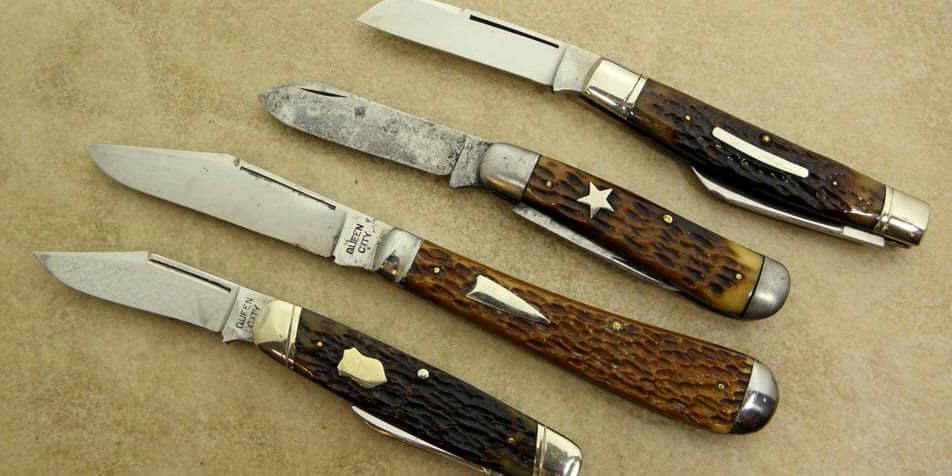
Knife Library
- hundreds of photographs and descriptions of Queen, Schatt & Morgan and Dollar Knife Co. knives, some dating back to the 19th century.
- folding knives, sheath knives and tableware.
- Organized by pattern number
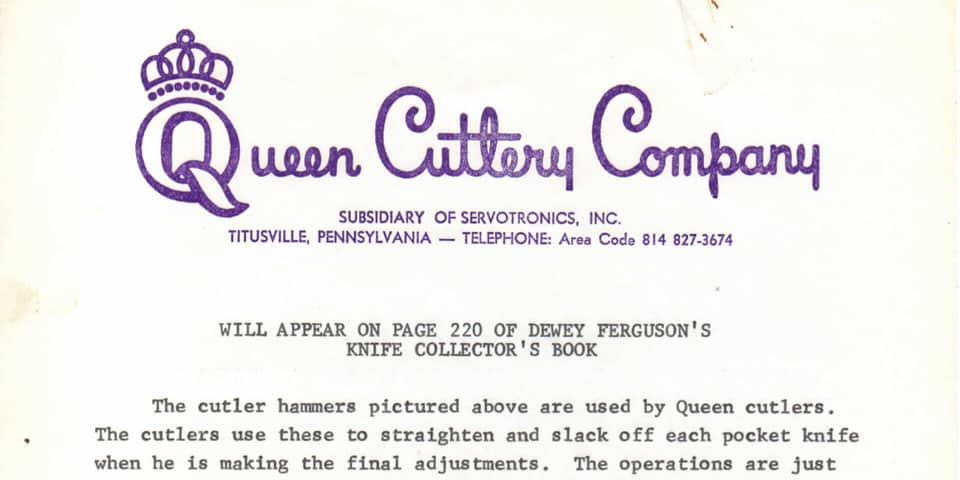
Historical Documents
- Articles written by Queen historians such as David Clark, Dr. David Kraus and Bob Welch.
- Queen company documents
- Historical Knife Spotlight archive
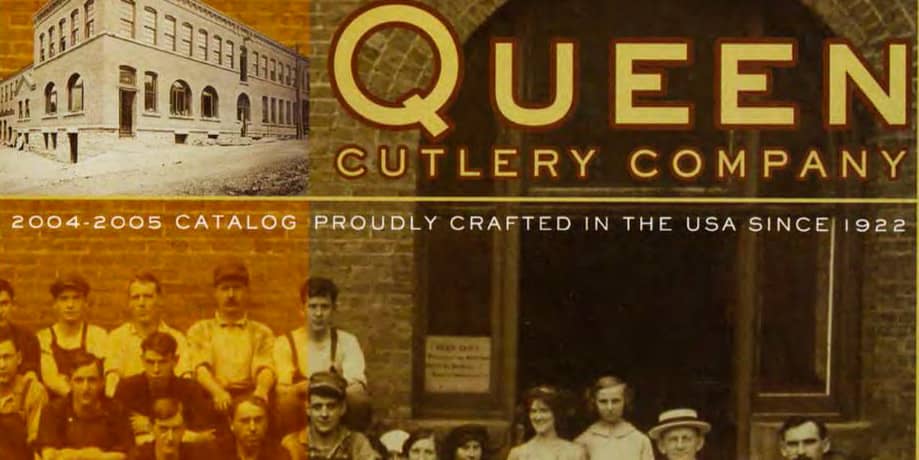
Catalogs
- Complete collection of Queen Cutlery catalogs
- Located within Historical Documents
- Promotional and sales materials
- Product flyers and price lists
- Downloadable, full color pdf’s
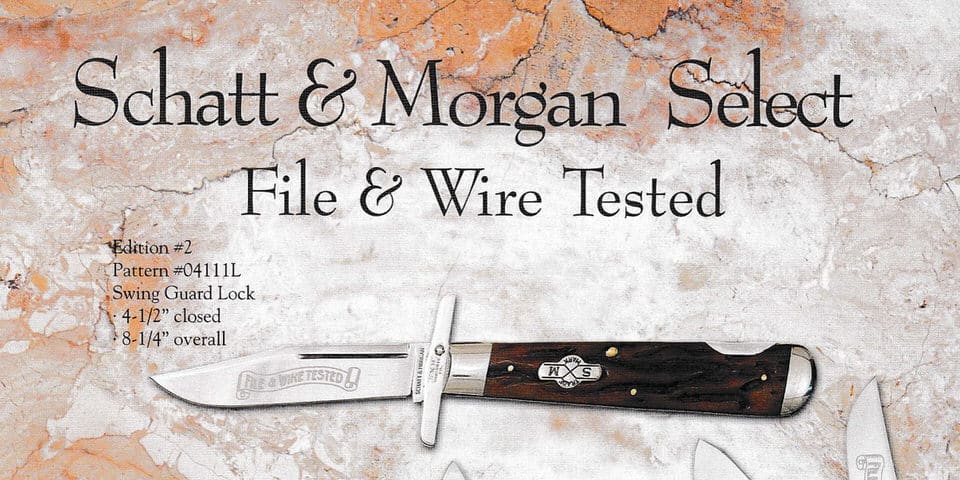
Flyers & Ads
- Cutlery advertisements
- Promotional materials from Queen City, Queen Cutlery and Schatt & Morgan
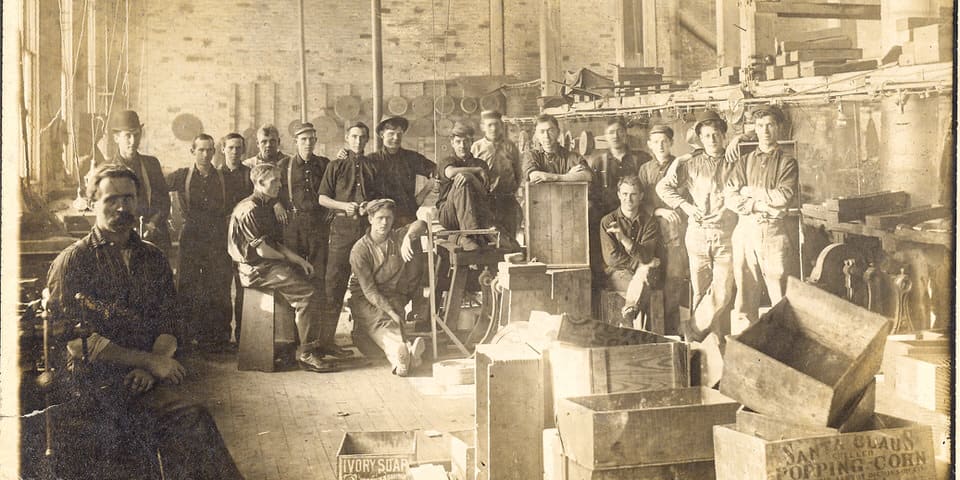
About
- Biographies of Queen Historians
- Contact Us
- Privacy Policy

